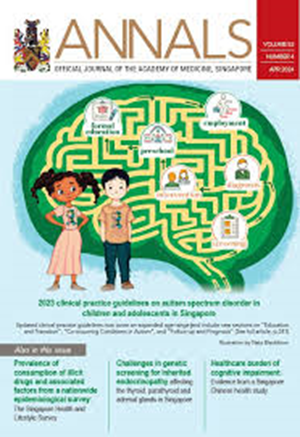噻嗪类和类噻嗪类利尿剂与慢性肾病患者心血管和肾脏预后改善相关
IF 5.2
4区 医学
Q2 Medicine
引用次数: 1
摘要
简介:高血容量血症是慢性肾脏疾病(CKD)患者的常见合并症。噻嗪类利尿剂(THZ)是容量超载和高血压(HTN)最常见的治疗方法。本研究在全国队列中研究了慢性肾病患者中THZ使用与临床结果之间的关系。方法:本研究共纳入24312例患者。在与从CKD人群中随机选择的一名非用户进行匹配后,我们在THZ和比较队列中确定了8501名患者。采用Cox比例风险回归分析来估计太赫兹与全因死亡率、终末期肾病(ESRD)、充血性心力衰竭(CHF)、急性心肌梗死(AMI)、外周动脉闭塞性疾病(PAOD)和卒中发生率的关联。结果:太赫兹使用者的全因死亡率明显低于非使用者(风险比[HR] = 0.65, 95%可信区间[CI] = 0.60-0.71)。太赫兹的使用与较低的ESRD、AMI、pad和卒中发生率相关(P<0.05)。在亚组分析中,一些显著的临床结局与CKD 3期和4期相关(P<0.05);然而,在CKD 5期没有临床关联。在进一步的THZ亚型分析中,氯噻酮治疗与更少的死亡、ESRD、AMI和pad存在临床关联。此外,吲达帕胺处方与较低的死亡率、ESRD、AMI和pad患病率有关。然而,在美托酮使用者中,ESRD、CHF和AMI的发生率明显更高。结论:在CKD 3期和4期患者中,THZ的使用与较低的死亡率和ESRD、AMI、pad和卒中发生率相关。本文章由计算机程序翻译,如有差异,请以英文原文为准。
Thiazide and thiazide-like diuretics associated with improved cardiovascular and renal outcomes for chronic kidney disease patients
Taiwan Introduction: Hypervolemia is a prevalent comorbidity of chronic kidney disease (CKD) patients. Thiazide diuretics (THZ) are the most common treatment for volume overload and hypertension (HTN). This study examines the association between THZ usage and clinical outcomes among CKD patients in a nationwide cohort. Method: The total number of patients in the study was 24,312. After matching with one non-user randomly selected from the CKD population, we identified 8501 patients in the THZ and the comparison cohorts. Cox proportional hazards regression analysis was conducted to estimate the associations of THZ on the incidence of all-cause mortality, end-stage renal disease (ESRD), congestive heart failure (CHF), acute myocardial infarction (AMI), peripheral arterial occlusive disease (PAOD), and stroke. Results: The all-cause mortality rate was significantly lower in THZ users than in non-users (hazard ratio [HR] = 0.65, 95% confidence interval [CI] = 0.60–0.71). The THZ usage was associated with a lower incidence of ESRD, AMI, PAOD, and stroke (P<0.05). In subgroup analysis, some significant clinical outcomes were related with CKD stages 3 and 4 (P<0.05); however, there were no clinical associations in CKD stage 5. In further THZ subtype analysis, there were clinical associations with fewer deaths, ESRD, AMI, and PAOD accompanying chlorthalidone treatment. Moreover, the indapamide prescription was linked to lower mortality, ESRD, AMI, and PAOD prevalence. However, there were significantly greater incidences of ESRD, CHF, and AMI in the metolazone users. Conclusion: THZ usage is associated with lower mortality and incidence of ESRD, AMI, PAOD, and stroke s in patients with CKD stages 3 and 4.
求助全文
通过发布文献求助,成功后即可免费获取论文全文。
去求助
来源期刊

Annals Academy of Medicine Singapore
医学-医学:内科
CiteScore
4.90
自引率
5.80%
发文量
186
审稿时长
6-12 weeks
期刊介绍:
The Annals is the official journal of the Academy of Medicine, Singapore. Established in 1972, Annals is the leading medical journal in Singapore which aims to publish novel findings from clinical research as well as medical practices that can benefit the medical community.
 求助内容:
求助内容: 应助结果提醒方式:
应助结果提醒方式:


